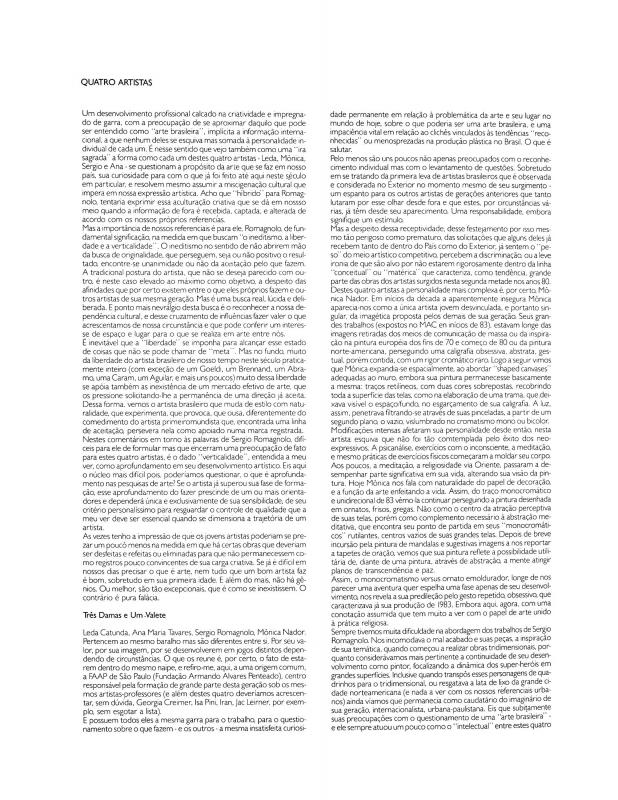The art critic Maria Alice Milliet is in charge of the estate of the Coleção Nemirovsky, now integrated into the State Art Gallery of São Paulo. In this introduction, Milliet clarifies how a meditation on individual and female identity is at the heart of the work of Nazareth Pacheco. For Nazareth, this has nothing to do with gratuitous quotations or one more reference to the overworked signs of “politically correct” feminism. In Milliet’s opinion, Nazareth weaves the issue into her work to the point of raising the viewer’s awareness. All this work fits in with that of a large group of artists who appeared in the late 1980s and had the capability of striking up an intense, more direct dialogue with the viewers than that of earlier artists. They did this by “revealing potential, more disturbing content,” which exposed their sensitivity to the point of constructing a poetics that took shape around the body and identity.
In this regard, see the feminist approaches among members of the Geração 80 in the essay “Quatro artistas” by Aracy Amaral [doc. no. 1110458], and by the same critic, “Espelhos e sombras” [doc. no. 1111060], about women painters of that generation, particularly, the works of Nazareth Pacheco (in which making yourself beautiful is mixed up with torture).


